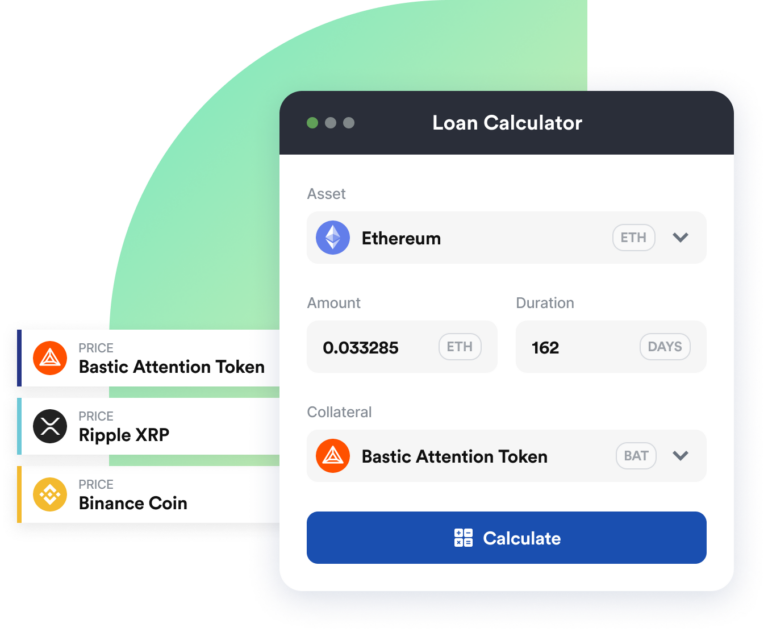Over the last few years, decentralized finance (DeFi) has opened up new opportunities for traders and investors. Liquidity pools are one of the key innovations in this space, which have become a viable alternative to traditional order books. Traders and liquidity providers benefit from liquidity pools, including improved price stability, lower transaction fees, and better market efficiency.
Understanding Liquidity Pools
Let’s take a closer look at liquidity pools and how they work before we get to the benefits.
What is a Liquidity Pool?
Liquidity pools are decentralized trading platforms that act like market makers. Liquidity pools use automated smart contract algorithms to set asset prices based on supply and demand instead of a traditional order book.
A liquidity pool is a pool of funds that people have contributed to, in the form of digital tokens. By providing liquidity and acting as a counterparty, these tokens facilitate trades. Traders pay a small fee that goes to liquidity providers. People are then incentivized to provide liquidity to the pool, which keeps prices stable by ensuring there’s always enough liquidity.
How do Liquidity Pools Work?
Liquidity pools use automated market maker algorithms, which means the prices of assets are determined by algorithms instead of limit orders from buyers and sellers. Using constant product market making, the pool calculates the price of an asset based on the ratio of the two tokens.
Take ETH and DAI, for example, in a liquidity pool. The price of ETH in DAI will be 1:1 if each token is equal in the pool. The ratio of ETH to DAI in the pool will be skewed if someone buys a lot of ETH. Therefore, the price of ETH will go up since there’s less of it in the pool. In contrast, if someone sells a lot of ETH, the price will drop.
Traders can exchange assets without needing a traditional order book thanks to this constant product market-making process.
Liquidity Pool Components
Liquidity pools have several key components:
- Assets used in the pool (e.g. ETH and DAI)
- Smart contract algorithm that sets asset prices automatically
- Fee-based liquidity providers who add funds to the pool
- Traders who use the pool to trade assets
Liquidity pools provide traders with an efficient way to exchange assets. Liquidity pools eliminate the need for a traditional order book, which can be slow and inefficient. Liquidity pools, on the other hand, use automated market maker algorithms, which are more efficient at exchanging assets between traders.
By providing liquidity to liquidity pools, people can earn passive income as well. Fees paid by traders can be a lucrative passive income source for liquidity providers.
Liquidity pools, however, do not come without risks. The main risk is impermanent loss, which happens when one asset’s price changes compared to another. Liquidity providers can lose money, even if the pool’s value has gone up.
In spite of these risks, liquidity pools are becoming a popular way for traders to trade assets. Liquidity pools are likely to become an even more important part of the decentralized finance ecosystem as it grows.
Advantages of Liquidity Pools
Let’s explore the benefits of liquidity pools now that we know how they function.
Stable prices
Liquidity pools provide better price stability than traditional order book exchanges, which is one of their major advantages.
A liquidity pool’s prices are determined by an algorithm that considers current supply and demand, making them less volatile and more stable than those on order book exchanges. Traders who want to avoid price slippage and get the best price for their trades can use this feature to their advantage.
Moreover, liquidity pools use an algorithm that prevents large price swings due to sudden movements in the market. In times of high volatility, the price of assets in the pool remains stable.
Reduced transaction fees
Compared to traditional order book exchanges, liquidity pools typically charge lower transaction fees. Because fees are shared among liquidity providers instead of going to a centralized exchange.
Since liquidity pools are decentralized and built on blockchain technology, they can run 24/7 without interruption and have much lower overhead costs than traditional exchanges. As a result, traders and investors pay less.
In addition, liquidity pools are designed to be more accessible to small traders and investors. It means that even people with limited capital can participate in the market and earn money.
Improved market efficiency
Compared to traditional order book exchanges, liquidity pools enhance market efficiency.
Liquidity pools are designed to always have enough liquidity for trades, so they fill orders faster and have less price slippage than traditional exchange platforms. The speed and efficiency they offer makes them popular with traders.
Furthermore, liquidity pools can support a variety of trading pairs, so traders can easily swap assets without having to go through multiple exchanges. As a result, trading is faster, more efficient, and cheaper.
Liquidity providers get incentives
Liquidity pools also provide an incentive for people to provide liquidity by charging transaction fees.
You can become a liquidity provider and earn a share of the fees generated by the pool. Everyone can participate and contribute to the market’s liquidity in this decentralized ecosystem.
Liquidity providers can also earn governance tokens, which give them a say in the future of the liquidity pool. Incentives keep them invested in the pool and help it succeed.
It is clear that liquidity pools offer a range of benefits that make them an attractive alternative to traditional order book exchanges. In the decentralized finance ecosystem, liquidity pools provide improved price stability, lower transaction fees, and enhanced market efficiency.
The most popular liquidity pool platforms
The Decentralized Finance movement has revolutionized the way people trade and invest in cryptocurrencies. Traders and liquidity providers use liquidity pool platforms to participate in the market and earn rewards. Traders and liquidity providers can participate in the DeFi space using several popular liquidity pool platforms. Here are some of the most popular options:
Uniswap
In today’s market, UniSwap is one of the most popular liquidity pool platforms. A decentralized exchange uses a market maker to determine asset prices based on supply and demand.
Its ease of use, low fees, and wide range of supported assets have made Uniswap popular among traders and liquidity providers. By providing liquidity to the platform, traders can also earn rewards.
Uniswap has revolutionized the DeFi space by providing a decentralized alternative to traditional centralized exchanges. In addition, the company has been at the forefront of several innovations, such as the introduction of flash swaps.
Balancer
Another popular liquidity pool platform is Balancer, which allows users to create pools with up to eight different assets.
To set the prices of assets, Balancer uses an automated market maker algorithm similar to Uniswap. Nevertheless, it also offers a range of additional features, such as the ability to create liquidity mining pools and customize token weights.
Due to its flexibility and customization options, Balancer has gained popularity among traders and liquidity providers. Additionally, it allows traders to earn rewards by providing liquidity to the platform.
Curve Finance
Curve Finance is a stablecoin-focused liquidity pool platform.
In addition to providing low slippage and fast trades for stablecoin trading pairs, it is a popular choice for traders who wish to trade stablecoins efficiently. It is due to its low fees and high liquidity for stablecoins that Curve Finance has gained popularity.
As a pioneer of several innovations, Curve Finance introduced the first decentralized exchange to offer low-slippage swaps between stablecoins based on Ethereum.
Bancor
The Bancor platform is a liquidity pool designed to provide continuous liquidity for ERC-20 tokens.
In order to determine the price of assets in the pool, it uses an algorithm called the Bancor Formula, which takes into account the current supply and demand for each token. As a result, traders and liquidity providers have access to continuous liquidity.
Due to its unique algorithm and continuous liquidity, Bancor has gained popularity among traders and liquidity providers. Traders may also earn rewards by providing liquidity to the platform.
As a result, liquidity pool platforms have become an integral part of the DeFi ecosystem, allowing traders and liquidity providers to participate in the market and earn rewards. Liquidity pool platforms such as Uniswap, Balancer, Curve Finance, and Bancor are among the most popular on the market today, each with its own unique benefits and features.
Risks and Challenges of Liquidity Pools
Traders and liquidity providers should be aware of the risks and challenges associated with liquidity pools.
Impermanent Loss
Liquidity pools run the risk of impermanent loss, which is the potential loss of value when assets in the pool change price.
Liquidity providers can experience impermanent losses when the price ratio of the two assets changes, which is the difference between the asset value at the time of deposit and the asset value at the time of withdrawal.
Smart Contract Vulnerabilities
Smart contract vulnerabilities are another risk of liquidity pools. Due to blockchain technology, liquidity pools are vulnerable to smart contract bugs and vulnerabilities.
Both traders and liquidity providers should do their due diligence and make sure they use reputable liquidity pools that have been audited and tested.
Regulatory Uncertainty
Lastly, there’s also regulatory uncertainty in the DeFi space, which can make it hard for traders and liquidity providers to navigate the legal landscape.
The DeFi space will continue to evolve and mature, so regulatory scrutiny will likely increase and the legal framework will likely change.
Conclusion
As an alternative to traditional order book exchanges, liquidity pools offer better price stability, lower transaction fees, and enhanced market efficiency.
Liquidity pools have risks and challenges, but they’re a great option for traders and liquidity providers looking to participate in decentralized finance.
Liquidity pool platforms and related technologies will continue to evolve and mature as the DeFi space evolves.
FAQs
Let’s explore the most frequently asked questions about liquidity pools.
What is a liquidity pool?
Liquidity pools provide traders and investors with liquidity. All trades are executed fairly and securely using smart contracts in liquidity pools.
How do liquidity pools work?
A liquidity pool pools funds from multiple investors and creates a market for a particular cryptocurrency pair. Investors get liquidity pool tokens for their contributions, which represent a share of the pool’s value. Token holders can withdraw their liquidity pool shares at any time.
What are the benefits of liquidity pools?
Liquidity pools offer traders and investors several benefits, including the ability to enter and exit trades quickly and without big price swings. Decentralized liquidity pools also reduce the risk of market manipulation since they’re not susceptible to the same kind of manipulation as centralized exchanges.
What is impermanent loss?
An impermanent loss can happen when the price of two cryptocurrencies in a liquidity pool changes significantly. Liquidity providers can lose money if the value of their liquidity pool tokens drops.
What is yield farming?
Liquidity providers use yield farming to earn more on their investments. To earn additional rewards, such as governance tokens or interest payments, you stake liquidity pool tokens in other DeFi protocols.
What are liquidity pool fees?
Liquidity pools from transactions generate fees. Liquidity providers share the fees based on their share. Fees for liquidity pools can be structured several ways, depending on the pool.
What are the risks of liquidity pools?
Liquidity pools have their risks, like impermanent losses, smart contract risks, and security risks. Investors need to be aware of the risks and take precautions to protect their investments.







